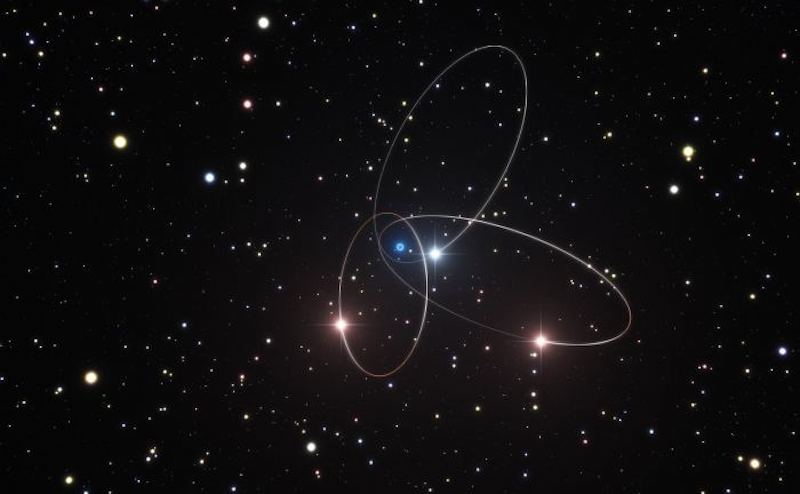 Artist's impression of the orbits of three of the stars very close to the supermassive black hole at the center of the Milky Way. Credit: ESO/M. Parsa/L. Calçada
Artist's impression of the orbits of three of the stars very close to the supermassive black hole at the center of the Milky Way. Credit: ESO/M. Parsa/L. Calçada
Aug. 14, 2017 (Phys.org) -- At the center of our galaxy, roughly 26,000 light years from Earth, lies the supermassive black hole (SMBH) known as Sagittarius A*. Measuring 44 million km across, this object is roughly 4 million times as massive as our Sun and exerts a tremendous gravitational pull. Since astronomers cannot detect black holes directly, its existence has been determined largely from the effect it has on the small group of stars orbiting it.
In this respect, scientists have found that observing Sagittarius A* is an effective way of testing the physics of gravity. For instance, in the course of observing these stars, a team of German and Czech astronomers noted subtle effects caused by the black hole's gravity. In so doing, they were able to yet again confirm some of the predictions made by Einstein's famous Theory of General Relativity.
Their study, titled "Investigating the Relativistic Motion of the Stars Near the Supermassive Black Hole in the Galactic Center", was recently published in the Astrophysical Journal. As is indicated in the course of it, the team applied new analysis techniques to existing observations that were made by European Southern Observatory's (ESO) Very Large Telescope (VLT) and other telescopes over the course of the past 20 years.
From this, they measured the orbits of the stars that orbit Sagittarius A* to test predictions made by classical Newtonian physics (i.e. universal gravitation), as well as predictions based on general relativity. What they found was that one of the stars (S2) showed deviations in its orbit which were defied the former, but were consistent with the latter.
(more)
READ MORE: Phys.org





